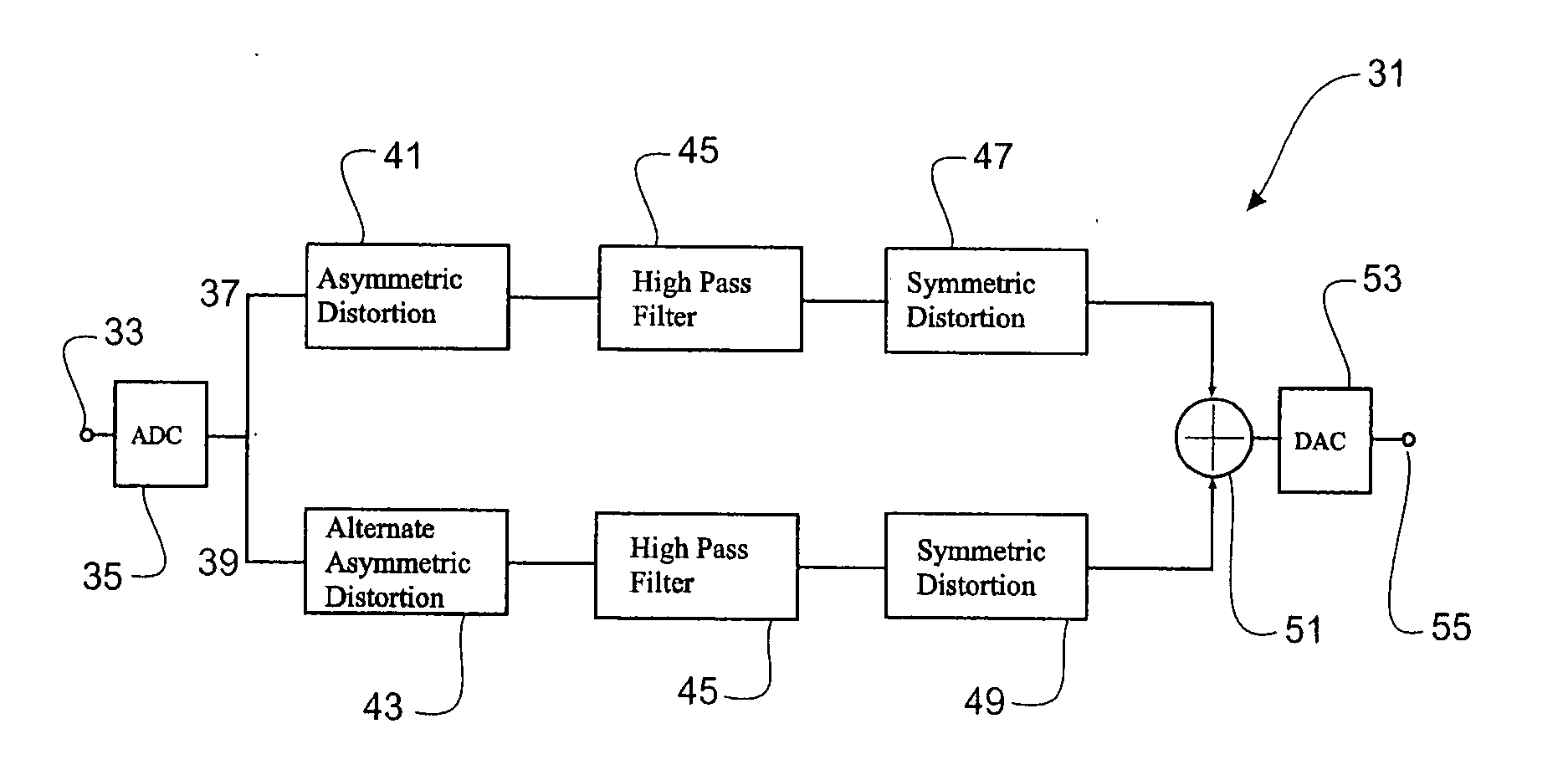Nonlinear Processor for Audio Signals
a processor and audio technology, applied in the field of musical signals, can solve the problems of power amplifier crossover distortion, overdrive of symmetric-pair power stages, and maximize the loudness of the amplifier for a given power rating
- Summary
- Abstract
- Description
- Claims
- Application Information
AI Technical Summary
Benefits of technology
Problems solved by technology
Method used
Image
Examples
Embodiment Construction
[0063] The present invention is directed at a nonlinear processor for audio signals that is capable of producing controllable crossover-distortion-like effects without requiring the use of D.C. biasing, and which can produce a more gradual transition into crossover distortion than obtained by tube emulation. The nonlinear processor can be implemented in analogue or digital form as will be described, by way of example, with reference to the first and second preferred embodiments of FIGS. 6 and 12 respectively.
[0064] The present invention may also enable the incorporation of controllable crossover-like effects into a multiband nonlinear processor to reduce harmonic distortion while also offering control of intermodulation distortion. The multiband nonlinear processor may also be implemented in analogue or digital form as will be explained with reference to the third and fourth preferred embodiments of FIGS. 14 and 22 respectively.
[0065] Referring to FIG. 6, the first preferred embod...
PUM
 Login to View More
Login to View More Abstract
Description
Claims
Application Information
 Login to View More
Login to View More - R&D
- Intellectual Property
- Life Sciences
- Materials
- Tech Scout
- Unparalleled Data Quality
- Higher Quality Content
- 60% Fewer Hallucinations
Browse by: Latest US Patents, China's latest patents, Technical Efficacy Thesaurus, Application Domain, Technology Topic, Popular Technical Reports.
© 2025 PatSnap. All rights reserved.Legal|Privacy policy|Modern Slavery Act Transparency Statement|Sitemap|About US| Contact US: help@patsnap.com



